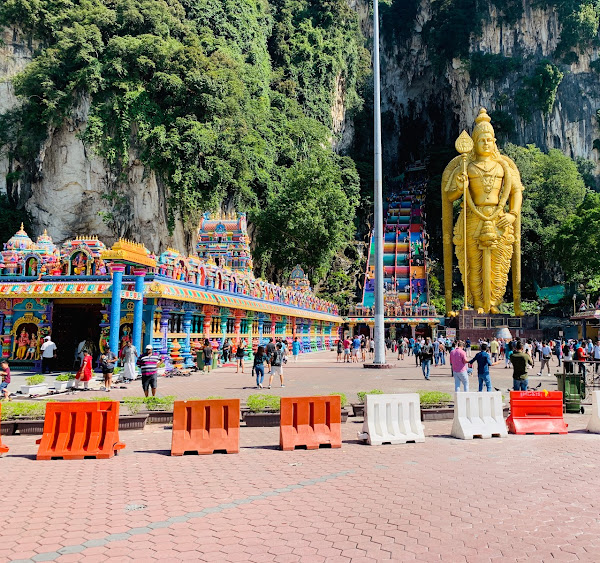Batu Caves Śrī Subramaniar Swamy Devasthanam – Malaysia

Address
Batu Caves Śrī Subramaniar Swamy Devasthanam 68100, Jalan Gombak, Batu Caves, 68100 Kuala Lumpur, Selangor, Malaysia
Deity
Sri Subramaniar Swamy
Introduction
- Batu Caves is a limestone hill with a series of caves and cave temples located in Gombak, Selangor, Malaysia.
- The name “Batu” means ‘rock’ in Malay; the hill was originally known as Kapal Tanggang from the legend of Si Tanggang.
- It is one of the most popular Hindu shrines outside India, dedicated to Lord Murugan.
- Batu Caves is the focal point of the Tamil festival of Thaipusam in Malaysia.
- Known as the 10th Cave or Hill for Lord Muruga, there are six major shrines in India and four in Malaysia.
- The Batu Malai Sri Murugan Temple is managed by the Sri Maha Mariamman Temple Devasthanam, which also manages several other temples in Kuala Lumpur.
Puranic Significance
- The limestone of Batu Caves is around 400 million years old and was once used as shelter by the indigenous Temuan people.
- Chinese settlers excavated guano from the caves in the 1860s.
- In 1878, colonial authorities and American naturalist William Hornaday recorded the limestone hills.
- K. Thamboosamy Pillai, inspired by the cave’s vel-shaped entrance, dedicated a temple to Lord Murugan in 1890.
- Thaipusam has been celebrated at Batu Caves since 1892, with wooden steps built in 1920, and concrete stairs added in 1940.
- The main cave, Temple Cave, houses Hindu shrines beneath a vaulted ceiling.
- In 2018, the 272 steps were painted in bright colors, leading to a dispute with the National Heritage Department.
Beliefs
- Devotees perform the kavadi ritual, carrying semi-circular supports with pots of milk or large structures decorated with flowers and peacock feathers.
- Some kavadis can weigh up to 100 kg, and devotees must bathe in the nearby Sungai Batu before climbing the 272 steps to the temple.
- The piercing of skin with skewers is part of the ritual, with no blood being shed during the process.
Special Features
- Batu Caves consists of three main caves: Cathedral Cave (or Temple Cave), Art Gallery Cave, and Museum Cave.
- Cathedral Cave has a high ceiling and contains Hindu shrines, while the Art Gallery Cave and Museum Cave showcase statues and paintings.
- Ramayana Cave tells the story of Rama, and features a 15 m statue of Hanuman and a temple dedicated to him.
- Batu Caves also features a 42.7-metre statue of Lord Murugan, the tallest in the world, unveiled in 2006.
Festivals
- Thaipusam is the main festival celebrated at Batu Caves, where devotees carry milk offerings in containers or on kavadis as a tribute to Lord Murugan.
Century/Period/Age
1920
Managed By
Board of Sri Maha Mariamman Temple Devastham
Nearest Bus Station
Batu Cave.
Nearest Railway Station
Senthalur
Nearest Airport
Kuala Lumpur




